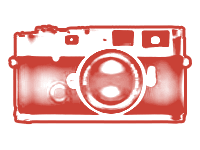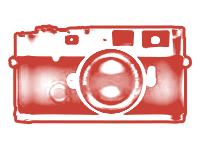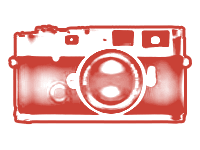High school music students watch as Dr. Faustin Charles comes to the front of the clinic to be honored in Bayonnais, Haiti on January 28, 2017. Dr. Charles grew up and Bayonnais and returns as a surgeon to help the families he grew up with giving up some much higher paying jobs in the bigger cities. Taken with a Leica SL.
From Idea to Reality
We follow a process to select an organization that ultimately becomes a project and a published work. Because of limited resources and photographers, we are not able to produce published work for every organization that is deserving. Many very valuable social and humanitarian programs exist that we are not able to cover. The process we follow to go from an Idea to a published work in reality is below.

Idea Selection
Ideas get to us through either word of mouth and submission or through personal experiences. The Board and David review the history of the Organization and what they do before making a final decision to proceed with offering a project. Some of the parameters that are considered include the location of service, the opportunity to create compelling photography, the ability to interview individuals on the receiving end of the Organization's mission and how an overall project could be conceived. The published work is conceptualized and the ability for that published work to create enough demand to warrant the creation is considered. While Mission Photography can create a published work on just about any topic, only topics that have a good chance of success are ultimately considered. The final hurdle is the timing and how that fits with available resources.
Any of these parameters could be a valid reason to reject the idea. If all the parameters fit but the resources are not available, then the Board has to determine which project has the best chance of succeeding. Then, the idea becomes selected and the next step is started.
Any of these parameters could be a valid reason to reject the idea. If all the parameters fit but the resources are not available, then the Board has to determine which project has the best chance of succeeding. Then, the idea becomes selected and the next step is started.

Research
The second phase is Research. Research takes time. Our mission includes educating people and research helps us not only understand more about an Organization and their mission, but helps us understand the people the Organization supports. People have great stories to tell - either out of need or from success. In order to create a successful project, we need to begin to develop a theme for the documentary.
Telling a story is not as simple as showing up and taking photographs. Logistics of making the trip, how to get to the location, what laws must be followed, food and shelter on site, transportation, languages spoken, interpreters - all the research needed just to get there and back. The logistics are important, but even the time spent researching this does not necessarily add to the story.
Researching the day-to-day activity is just as critical. Finding out who is in charge or who leads the group locally is vital. This person or people help us arrange the logistics, but also must believe in the project. Without their support, the project will fail. The leaders help us pick events and people to photograph and interview. This is the basis of the story.
Researching the geography and history of a location also helps understand why the Organization is there in the first place and what challenges have had to be overcome. The history of a people and a location help generate ideas for a theme and title of the work.
This research can take several months.
Telling a story is not as simple as showing up and taking photographs. Logistics of making the trip, how to get to the location, what laws must be followed, food and shelter on site, transportation, languages spoken, interpreters - all the research needed just to get there and back. The logistics are important, but even the time spent researching this does not necessarily add to the story.
Researching the day-to-day activity is just as critical. Finding out who is in charge or who leads the group locally is vital. This person or people help us arrange the logistics, but also must believe in the project. Without their support, the project will fail. The leaders help us pick events and people to photograph and interview. This is the basis of the story.
Researching the geography and history of a location also helps understand why the Organization is there in the first place and what challenges have had to be overcome. The history of a people and a location help generate ideas for a theme and title of the work.
This research can take several months.

On Location
After all the preparation and research is completed, we visit the location. For remote locations that would be difficult to quickly visit after an initial trip, we believe a minimum stay on location should be a week. This gives us time to develop the relationships and the stories. These relationships and stories are what guide the photography.
Each day will have been planned to some level during the research stage. While the schedule is flexible, it becomes a guide to help ensure the goals are met. However, we also see that sometimes a schedule is completely rewritten on location because of changing events and weather. Sometimes these schedule changes provide unique opportunities for a story worth much more than the planned activity.
At the end of each day we review the images and the notes looking for story development. We look for missing information that we need to gather before we leave the location. Typically, we like to have a day to leave open for filling these holes and making sure our story is complete.
Nothing can replace the experience of meeting people and learning about their life.
Each day will have been planned to some level during the research stage. While the schedule is flexible, it becomes a guide to help ensure the goals are met. However, we also see that sometimes a schedule is completely rewritten on location because of changing events and weather. Sometimes these schedule changes provide unique opportunities for a story worth much more than the planned activity.
At the end of each day we review the images and the notes looking for story development. We look for missing information that we need to gather before we leave the location. Typically, we like to have a day to leave open for filling these holes and making sure our story is complete.
Nothing can replace the experience of meeting people and learning about their life.

Organize, Create and Publish
Upon returning home the work begins to organize all of the notes and the images. Like the research phase, this phase takes time. We find there is frequently more information than we could possible put into one project. So, the process begins of determining which stories will be included and which ones will be excluded. This is truly difficult as every story is important.
After loosely putting together the stories, we begin to order them for presentation. We also are working on overall images to give people a sense of where they are. These images will be connected because of the location, but will have simple captions describing them instead of a story.
The creation process takes the stories and other location images and begins compiling a book. The book will be hardbound and use high end photographic papers for both accurate presentation of the images and also for archival purposes. Currently, we use the Blurb publishing process because of the quality and the ability to publish on demand. We believe the higher cost of creating each book is offset by producing the proper number of books.
After a first draft of the book is created, a few books are printed and distributed among our contacts that are well known experts in photography and photo journalism. We ask for "harsh" criticism to help us improve our work, but also to help improve what we deliver to an Organization for their project. We also like, if possible, to have one of the local leaders review some of our background stories to be sure we accurately presented that information.
Changes and corrections are made and a final draft is printed for review and quality control. During this process, if the project has enough volume of work, we may create one or more smaller paperback books that contain a sampling of the backstory and one or two stories. We may also pick several images to print in large sizes and frame using museum mounts and archival photographic paper. This becomes the collection of work to raise money for the organization.
Pricing and other decisions are made as the final items are made available. The costs are accumulated in connection with the pricing. Our publishing concept is to provide a price that provides a good amount of charitable contribution after the costs are covered. Because we are a charitable organization, the amounts paid for a book or print, less the value of that book or print, are considered tax deductible charitable contributions in the eyes of the Internal Revenue Services. A proper charitable receipt is included with each item.
All books will be available through an online purchasing process with Blurb. When the book is received, it will contain the charitable receipt. There may be a limited edition of one of the books available and the prints are all limited edition. These items are only available in person or through direct contact with our Organization. Once the limited editions are sold out, no more will be created.
After loosely putting together the stories, we begin to order them for presentation. We also are working on overall images to give people a sense of where they are. These images will be connected because of the location, but will have simple captions describing them instead of a story.
The creation process takes the stories and other location images and begins compiling a book. The book will be hardbound and use high end photographic papers for both accurate presentation of the images and also for archival purposes. Currently, we use the Blurb publishing process because of the quality and the ability to publish on demand. We believe the higher cost of creating each book is offset by producing the proper number of books.
After a first draft of the book is created, a few books are printed and distributed among our contacts that are well known experts in photography and photo journalism. We ask for "harsh" criticism to help us improve our work, but also to help improve what we deliver to an Organization for their project. We also like, if possible, to have one of the local leaders review some of our background stories to be sure we accurately presented that information.
Changes and corrections are made and a final draft is printed for review and quality control. During this process, if the project has enough volume of work, we may create one or more smaller paperback books that contain a sampling of the backstory and one or two stories. We may also pick several images to print in large sizes and frame using museum mounts and archival photographic paper. This becomes the collection of work to raise money for the organization.
Pricing and other decisions are made as the final items are made available. The costs are accumulated in connection with the pricing. Our publishing concept is to provide a price that provides a good amount of charitable contribution after the costs are covered. Because we are a charitable organization, the amounts paid for a book or print, less the value of that book or print, are considered tax deductible charitable contributions in the eyes of the Internal Revenue Services. A proper charitable receipt is included with each item.
All books will be available through an online purchasing process with Blurb. When the book is received, it will contain the charitable receipt. There may be a limited edition of one of the books available and the prints are all limited edition. These items are only available in person or through direct contact with our Organization. Once the limited editions are sold out, no more will be created.

Presentation
After the work is published, some limited presentations can be made at the project Organization. The presentation is the climax of all the work done on the project. Sometimes this can be a year after the project began.
These presentations include a talk by the Photographer and a video presentation of some of the images made during the project. The purpose of the presentation is to educate people about the project Organization's work and help them see more about the impact to a group of people that they may never get to experience themselves.
After the presentation, a limited number of pre-printed books will be available for sale. Also, any limited edition items still available will be also displayed for sale. The proceeds will be collected by Mission Photography and later distributed after costs to the Organization.
As long as the presentation is local to the Photographer, no cost may be incurred for the presentation. The video equipment including any projector and screen is the responsibility of the project Organization. Mission Photography will bring a computer with any video stored there to show. If the presentation is out of town, the costs to make the presentation including travel, food and lodging will be deducted from any proceeds to the project Organization.
After any presentations, a final accounting will be done by Mission Photography and a check made out to the project Organization. Any restrictions on the use of the gift will be noted with the gift. Otherwise, unrestricted monies may be used in any manner the project Organization sees fit. If additional money is raised through purchasing books online, a periodic check will be sent to the project Organization for those funds, less the cost of printing the books.
These presentations include a talk by the Photographer and a video presentation of some of the images made during the project. The purpose of the presentation is to educate people about the project Organization's work and help them see more about the impact to a group of people that they may never get to experience themselves.
After the presentation, a limited number of pre-printed books will be available for sale. Also, any limited edition items still available will be also displayed for sale. The proceeds will be collected by Mission Photography and later distributed after costs to the Organization.
As long as the presentation is local to the Photographer, no cost may be incurred for the presentation. The video equipment including any projector and screen is the responsibility of the project Organization. Mission Photography will bring a computer with any video stored there to show. If the presentation is out of town, the costs to make the presentation including travel, food and lodging will be deducted from any proceeds to the project Organization.
After any presentations, a final accounting will be done by Mission Photography and a check made out to the project Organization. Any restrictions on the use of the gift will be noted with the gift. Otherwise, unrestricted monies may be used in any manner the project Organization sees fit. If additional money is raised through purchasing books online, a periodic check will be sent to the project Organization for those funds, less the cost of printing the books.